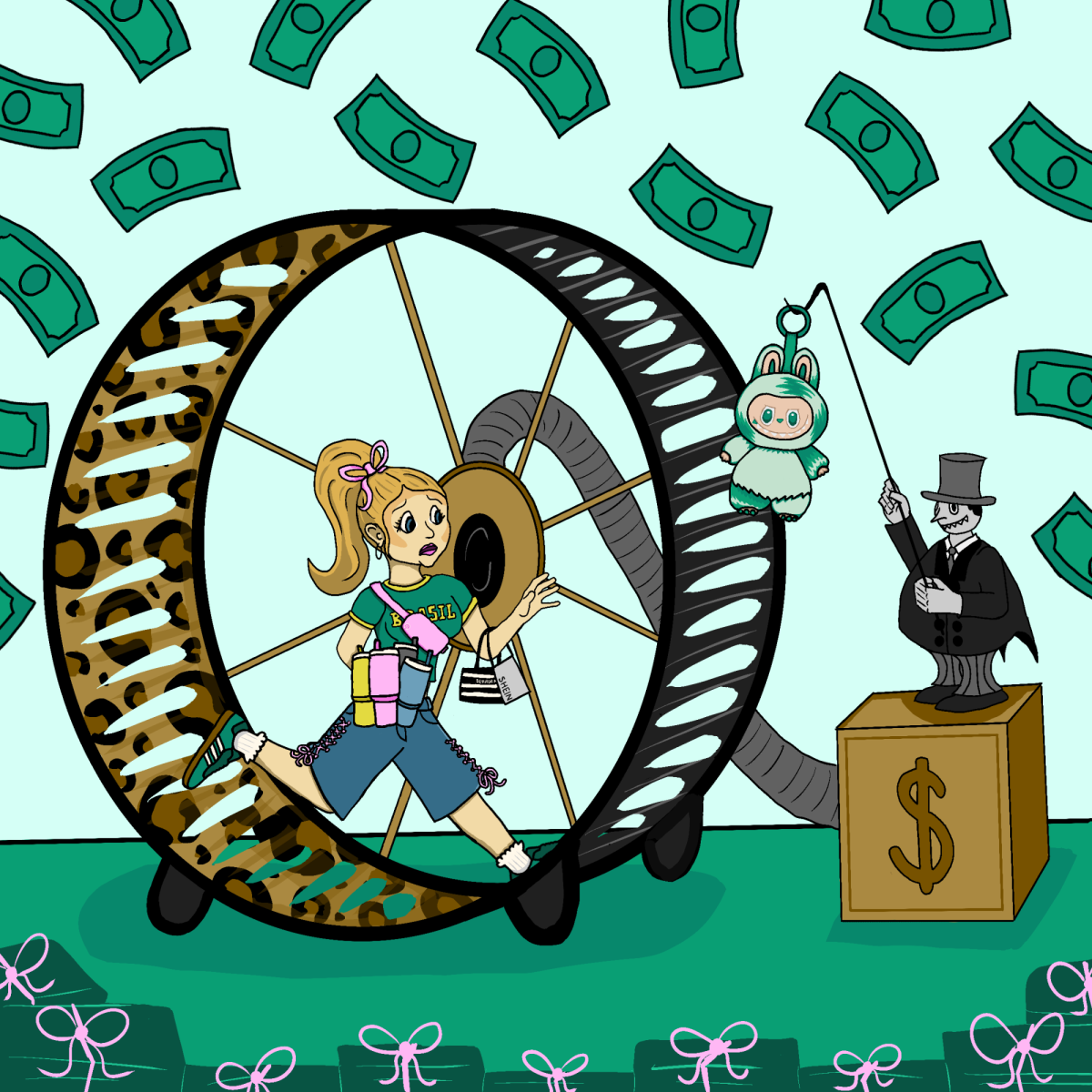Shopping has long been framed as a pastime in the United States. From retail therapy to weekend mall trips, consumption is marketed as a way to relax, socialize or boost one’s mood.
In the age of social media, the need for constant distraction and instant gratification has only intensified, and one way it takes shape is online shopping.
With blind-box openings and Labubu figurines flooding social media, it’s clearer than ever that people treat mindless consumerism as a hobby. Unlike hobbies centered around building skills or exercising creativity, habitual spending offers a fleeting dopamine boost and a growing collection of unnecessary items. While often developed subconsciously, this unsustainable pastime drains people’s wallets and leaves them looking for their next purchase.
Many businesses thrive on this toxic cycle and encourage consumers to see shopping as a form of self-care. The idea of retail therapy is reinforced through advertising and social media, telling consumers that shopping is the cure-all for their problems. The underlying issue here is that people are taught to interpret feelings of unhappiness and boredom as a lack of material goods. This framing makes consumption seem like a solution rather than a temporary distraction.
Blind boxes directly tap into this mindset, hence their recent spike in popularity. Purchasing and opening them is treated as an activity in itself, even though the excitement lasts only a few seconds. This suggests the appeal was never actually in owning the product but in the process of anticipation, purchase and having something new for a short while.
This mindset extends beyond blind-box toys to shopping in general. Consumerism is hardly about wanting or needing the item itself, rather, it is about the instant gratification tied to the act of buying. The problem is, once the novelty fades, nothing of value remains. No skills are developed and no personal growth or learning has taken place. There’s no lasting sense of fulfillment.
Shopping is designed to be a never-ending loop of craving and consumption, rarely offering true satisfaction. If it did, companies would have little reason to keep driving purchases and turning profits.
Planned obsolescence, the practice of designing products with limited lifespans, ensures consumers must replace items with newer models. While this phenomenon is out of buyers’ control, there’s another side to the issue that consumers can influence.
Perceived obsolescence is the belief that a product becomes useless when it falls out of style and must be replaced. Social media trends and peer pressure reinforce this mindset, allowing businesses to maintain relevance and keep consumers chasing the next upgrade. Even though the product still functions perfectly, cultural trends dictate when it’s considered outdated. Over time, the habit of discarding one’s things in favor of more fashionable items erodes any deeper connection or attachment to what they own.
It’s important to note that not all consumption follows this wasteful pattern. Enjoying the hunt for a meaningful piece rooted in long-term value reflects a genuine hobby. Collectors take time to research and thoughtfully select items, often valuing the story or craftsmanship behind what they purchase. It’s not just for the sake of having something, but for the satisfaction of curating meaningful pieces meant to last.
True hobbies should be built on patience, practice and a sense of growth. They require time and focus, making the rewards all the more significant and worthwhile.
No instant transaction can rival the sense of accomplishment earned through careful effort and dedication. Engaging in a hobby means building something for oneself — something that exists beyond what companies can sell. In a culture increasingly obsessed with novelty and consumption, it’s worth remembering that fulfillment is earned, not bought.

